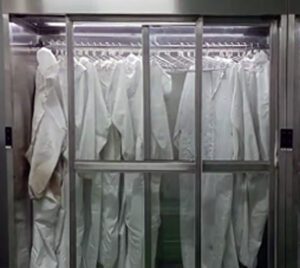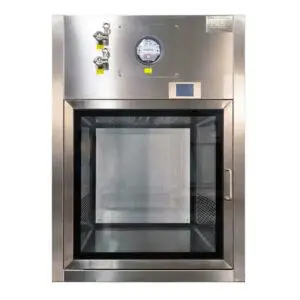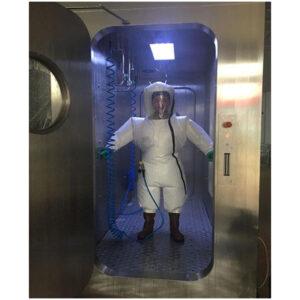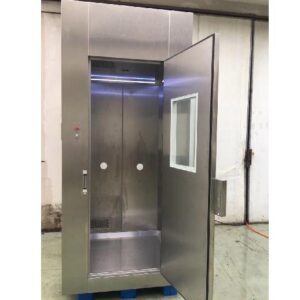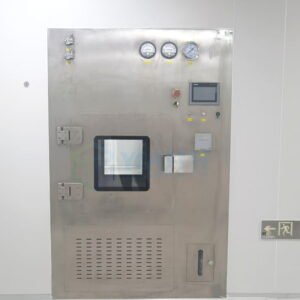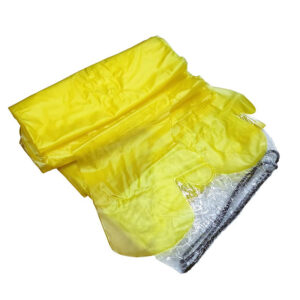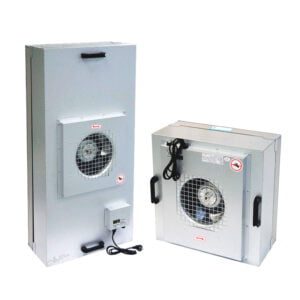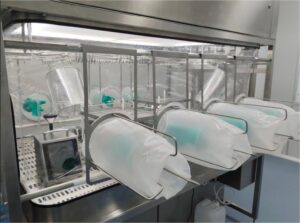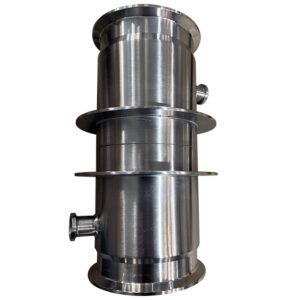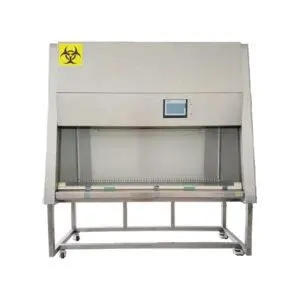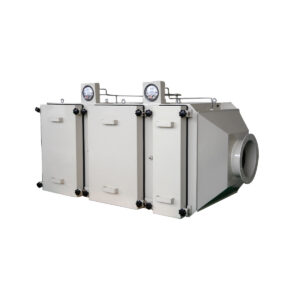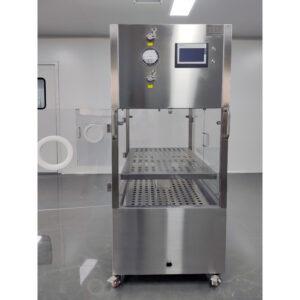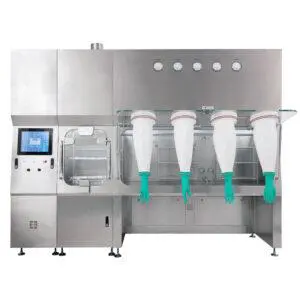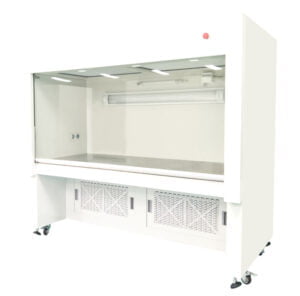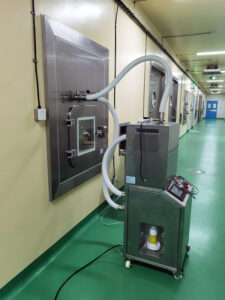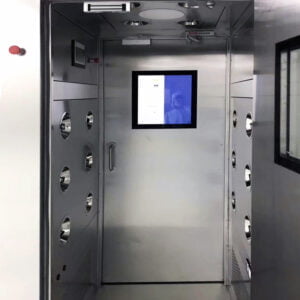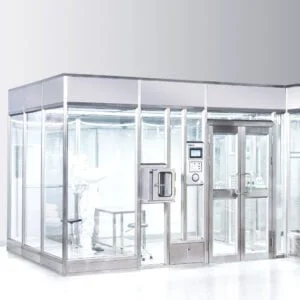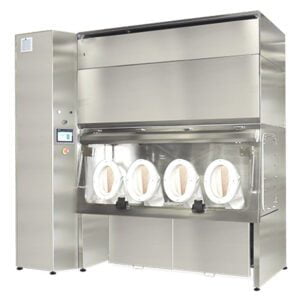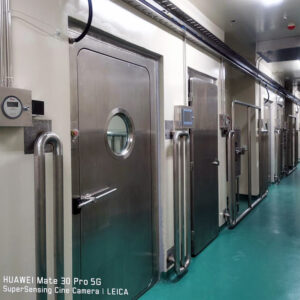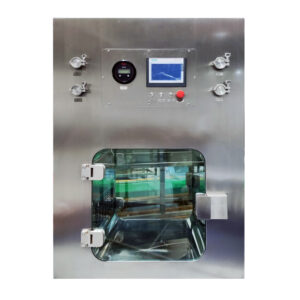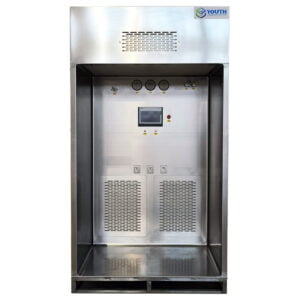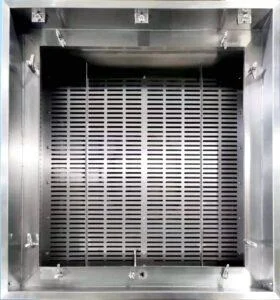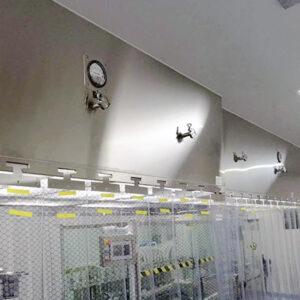Injectable drug sterility testing is a critical process in the pharmaceutical industry, ensuring the safety and efficacy of parenteral medications. As the demand for injectable drugs continues to rise, the importance of maintaining sterile conditions throughout manufacturing and testing becomes increasingly paramount. This article delves into the world of injectable drug sterility testing with a specific focus on the use of isolators, a cutting-edge technology that revolutionizes the testing process.
The pharmaceutical landscape is constantly evolving, with injectable drugs at the forefront of many innovative treatments. However, the effectiveness of these medications hinges on their sterility. Contaminated injectables can lead to severe health complications, making rigorous sterility testing an absolute necessity. This article will explore the various aspects of injectable drug sterility testing, from traditional methods to the implementation of advanced isolator technology.
As we navigate through the intricacies of sterility testing, we'll uncover the challenges faced by pharmaceutical companies and the solutions offered by modern technology. The use of isolators in sterility testing represents a significant leap forward, providing a controlled environment that minimizes the risk of contamination and enhances the accuracy of test results.
"Injectable drug sterility testing is not just a regulatory requirement; it's a critical step in ensuring patient safety and maintaining public trust in pharmaceutical products."
What are the key principles of injectable drug sterility testing?
Injectable drug sterility testing is founded on several fundamental principles that ensure the reliability and effectiveness of the process. These principles are designed to detect any microbial contamination that could compromise the safety of the drug product.
The primary objective of sterility testing is to verify that the drug product is free from viable microorganisms. This involves exposing the product to suitable growth media and incubating it under specific conditions to allow any potential contaminants to proliferate to detectable levels.
One of the most crucial aspects of sterility testing is maintaining aseptic conditions throughout the entire process. This is where YOUTH technologies come into play, providing advanced solutions for creating and maintaining sterile environments. The use of isolators, in particular, has revolutionized the way sterility testing is conducted.
"The principles of sterility testing are rooted in microbiology, but their application in pharmaceutical manufacturing requires a perfect blend of scientific knowledge and technological innovation."
| Principle | Description |
|---|---|
| Aseptic Technique | Maintaining sterile conditions throughout testing |
| Growth Media | Using appropriate media to support microbial growth |
| Incubation | Providing suitable conditions for potential contaminants to grow |
| Detection | Identifying any microbial growth that occurs during testing |
How do isolators enhance the sterility testing process?
Isolators have emerged as a game-changing technology in the field of injectable drug sterility testing. These enclosed units provide a highly controlled environment that significantly reduces the risk of contamination during the testing process.
The primary advantage of isolators is their ability to maintain a consistent, sterile environment. Unlike traditional cleanrooms, isolators create a physical barrier between the testing area and the external environment, minimizing the potential for human-borne contamination.
Injectable drug sterility testing isolators are designed with advanced filtration systems that ensure the air inside remains free from particulates and microorganisms. This level of control allows for more reliable and reproducible test results, a critical factor in pharmaceutical quality assurance.
"Isolators represent the gold standard in sterility testing environments, offering unparalleled control and consistency in maintaining aseptic conditions."
| Feature | Benefit |
|---|---|
| Physical Barrier | Reduces risk of external contamination |
| HEPA Filtration | Ensures particulate-free air within the isolator |
| Controlled Access | Minimizes human intervention and associated risks |
| Continuous Monitoring | Allows real-time tracking of environmental conditions |
What are the different types of isolators used in sterility testing?
Sterility testing isolators come in various configurations, each designed to meet specific testing requirements and accommodate different types of injectable drug products. Understanding these variations is crucial for selecting the most appropriate system for a given testing scenario.
The most common types of isolators used in sterility testing include open and closed isolators. Open isolators allow for more flexibility in terms of access and manipulation but require more stringent environmental controls. Closed isolators, on the other hand, offer a higher level of containment but may limit certain operations.
Another important distinction is between positive pressure and negative pressure isolators. Positive pressure systems are typically used for sterility testing of non-hazardous materials, while negative pressure isolators are employed when working with potentially harmful substances to prevent their release into the surrounding environment.
"The diversity in isolator designs reflects the complex nature of injectable drug products and the need for tailored sterility testing solutions."
| Isolator Type | Best Suited For |
|---|---|
| Open Isolator | Products requiring frequent manipulation |
| Closed Isolator | High-risk or sensitive materials |
| Positive Pressure | Standard sterility testing procedures |
| Negative Pressure | Testing of hazardous substances |
What are the regulatory requirements for sterility testing using isolators?
Regulatory compliance is a critical aspect of injectable drug sterility testing, and the use of isolators must adhere to strict guidelines set forth by various regulatory bodies. These requirements ensure that the testing process maintains the highest standards of quality and reliability.
The FDA and EMA have established specific guidelines for the use of isolators in sterility testing. These regulations cover aspects such as isolator design, validation procedures, and operational protocols. Compliance with these standards is essential for pharmaceutical companies to obtain and maintain regulatory approval for their products.
One of the key regulatory focuses is on the validation of the isolator system. This involves demonstrating that the isolator can consistently maintain the required sterile conditions and that the testing process within the isolator produces accurate and reliable results.
"Regulatory compliance in isolator-based sterility testing is not just about following rules; it's about establishing a culture of quality that permeates every aspect of the testing process."
| Regulatory Aspect | Requirement |
|---|---|
| Design Qualification | Demonstrating that the isolator meets design specifications |
| Installation Qualification | Verifying proper installation and functionality |
| Operational Qualification | Proving that the isolator operates as intended |
| Performance Qualification | Showing consistent performance under actual testing conditions |
How does the sterility testing process differ when using isolators?
The use of isolators introduces several significant changes to the traditional sterility testing process. These differences primarily revolve around the preparation, execution, and monitoring of the test environment.
In isolator-based testing, the preparation phase involves a thorough decontamination of the isolator chamber. This is typically achieved through a combination of physical cleaning and chemical sterilization, often using vaporized hydrogen peroxide (VHP). The decontamination process is validated to ensure it consistently achieves the required sterility level.
The execution of the test within an isolator requires specialized techniques and equipment. Operators must be trained in the proper use of glove ports and transfer systems to manipulate materials within the isolator without compromising sterility. Additionally, the use of rapid transfer ports (RTPs) allows for the aseptic transfer of materials in and out of the isolator.
"The transition to isolator-based sterility testing represents a paradigm shift in how we approach aseptic processing in pharmaceutical quality control."
| Process Step | Traditional Method | Isolator Method |
|---|---|---|
| Environment Preparation | Cleanroom setup and maintenance | Isolator decontamination cycle |
| Material Transfer | Manual transfer in cleanroom | Use of RTPs and transfer isolators |
| Operator Involvement | Direct manipulation in cleanroom | Indirect manipulation through glove ports |
| Environmental Monitoring | Periodic sampling | Continuous real-time monitoring |
What are the challenges in implementing isolator technology for sterility testing?
While isolators offer numerous advantages for injectable drug sterility testing, their implementation is not without challenges. Understanding these hurdles is crucial for pharmaceutical companies considering the adoption of this technology.
One of the primary challenges is the initial investment required for isolator systems. The cost of purchasing, installing, and validating an isolator can be significant. However, this must be weighed against the long-term benefits of improved reliability and potentially reduced operating costs.
Another challenge lies in the training and adaptation required for personnel. Operators accustomed to working in traditional cleanroom environments must learn new techniques for manipulating materials within the confines of an isolator. This learning curve can initially impact productivity and requires a comprehensive training program.
"The challenges in implementing isolator technology are not insurmountable obstacles, but rather opportunities for innovation and improvement in sterility testing practices."
| Challenge | Impact | Mitigation Strategy |
|---|---|---|
| High Initial Cost | Financial burden | Long-term cost-benefit analysis |
| Operator Training | Temporary productivity decrease | Comprehensive training programs |
| Validation Complexity | Extended implementation time | Thorough planning and expert consultation |
| Limited Flexibility | Potential constraints on testing procedures | Careful selection of isolator design |
How does isolator technology impact the reliability of sterility test results?
The implementation of isolator technology in injectable drug sterility testing has a profound impact on the reliability of test results. This enhanced reliability stems from several key factors inherent to isolator systems.
Firstly, isolators provide a consistently controlled environment that minimizes the risk of false positives due to environmental contamination. The physical barrier and advanced filtration systems ensure that the testing area remains sterile throughout the process, reducing the likelihood of introducing contaminants during testing.
Moreover, isolators allow for continuous environmental monitoring, providing real-time data on air quality, particle counts, and other critical parameters. This constant vigilance enables immediate detection and correction of any deviations from the required conditions, further enhancing the reliability of test results.
"The improved reliability offered by isolator technology is not just a technical advancement; it's a fundamental shift towards greater confidence in the safety of injectable drug products."
| Factor | Impact on Reliability |
|---|---|
| Controlled Environment | Reduces risk of false positives |
| Continuous Monitoring | Enables immediate detection of deviations |
| Reduced Human Intervention | Minimizes risk of operator-induced contamination |
| Standardized Processes | Enhances reproducibility of test results |
What future developments can we expect in isolator technology for sterility testing?
The field of isolator technology for injectable drug sterility testing is continuously evolving, with several exciting developments on the horizon. These advancements promise to further enhance the efficiency, reliability, and versatility of sterility testing processes.
One area of development is the integration of advanced robotics and automation within isolator systems. This could potentially reduce the need for human intervention even further, minimizing the risk of contamination and improving the consistency of testing procedures.
Another promising direction is the development of more compact and flexible isolator designs. These innovations could make isolator technology more accessible to smaller pharmaceutical companies and contract testing laboratories, broadening its adoption across the industry.
"The future of isolator technology in sterility testing is not just about incremental improvements; it's about reimagining the entire testing paradigm to meet the evolving needs of the pharmaceutical industry."
| Future Development | Potential Impact |
|---|---|
| Advanced Robotics | Further reduction in human intervention |
| Compact Designs | Increased accessibility for smaller facilities |
| Improved Decontamination | Faster turnaround times between tests |
| Enhanced Monitoring Systems | More precise control and data analysis |
In conclusion, injectable drug sterility testing with isolators represents a significant advancement in pharmaceutical quality control. The technology offers enhanced reliability, improved contamination control, and greater consistency in test results. While challenges exist in implementation, the benefits of isolator technology far outweigh the initial hurdles.
As the pharmaceutical industry continues to evolve, with an increasing focus on complex biologics and personalized medicines, the role of advanced sterility testing methods becomes even more critical. Isolator technology is well-positioned to meet these emerging challenges, providing a robust platform for ensuring the safety and efficacy of injectable drug products.
The future of injectable drug sterility testing lies in the continued refinement and innovation of isolator technology. As we look ahead, we can anticipate more intelligent, efficient, and adaptable systems that will further elevate the standards of pharmaceutical quality control. This ongoing evolution will play a crucial role in safeguarding public health and maintaining confidence in the pharmaceutical products that millions rely on every day.
External Resources
Sterility Testing by Direct Inoculation – Sigma-Aldrich – This resource details the direct inoculation method for sterility testing, particularly for non-filterable samples, including the use of various media and the advantages of this method.
Sterility Testing – Charles River Laboratories – This article explains both direct inoculation and membrane filtration methods for sterility testing, including the environment in which these tests are conducted and additional tests like bacteriostasis/fungistasis testing.
Sterility testing of antimicrobial-containing injectable solutions – This resource discusses the necessity of sterility testing for antimicrobial-containing injectable solutions, outlining both membrane filtration and direct transfer methods, and the importance of eliminating antimicrobial activity during testing.
United States Pharmacopeia: Sterility Tests – This link provides guidelines and standards from the United States Pharmacopeia for performing sterility tests, including methods and validation procedures.
Sterility Testing: An Overview – LabCorp – This resource offers an overview of sterility testing, including the different methods used, the importance of sterility in pharmaceuticals, and the types of samples that require this testing.
Pharmaceutical Sterility Testing – Eurofins – This article describes the various sterility testing methods, including direct inoculation and membrane filtration, and highlights the importance of these tests in ensuring the safety of pharmaceutical products.
Sterility Testing for Injectable Drugs – SGS – This resource explains the sterility testing services provided for injectable drugs, including the methods used and the regulatory compliance aspects.
Rapid Sterility Testing for Pharmaceutical Products – Celsis – This link discusses rapid sterility testing using ATP bioluminescence technology, which provides quicker results compared to traditional methods, and is particularly useful for products with short shelf lives.
Related Contents:
- Medical Device Testing with Sterility Test Isolators
- cGMP Compliant Sterility Test Isolators: Key Features
- Radiopharmaceutical Sterility Testing: Isolator Guide
- Compact Sterility Test Isolators for Small Labs
- Sterility Test Isolators for Ophthalmic Products
- Custom Sterility Test Isolators: Top 5 Designs 2025
- Sterile Antibiotic Testing: Isolator Techniques
- Environmental Monitoring in Sterility Test Isolators
- Glove Sterility Test Isolators: Essential Guide 2025


